When it comes to B2B marketing, having a solid strategy could mean the difference between success and failure. But where do you start? And how do you keep track of what you’ve already done and what you still need to do?
The answer is easy: Use a B2B content marketing strategy checklist.
From understanding your goals to planning and implementing your strategy, this checklist has everything you need to help you get your content out there and see awesome results. Plus, there are in-depth insights (taken from experience!) and explanations as to why certain things need to be on your checklist.
By understanding exactly how these steps further your goals and can make your strategy even better, you can equip yourself with the tools to blow your audience away.
TLDR: Your Ultimate B2B Content Distribution Checklist
❐ Outline your content goals
❐ Segment your audience
❐ Create a content plan and strategy
❐ Create engaging, high-quality content
❐ Promote your content
❐ Repromote and repurpose your content for maximum engagement
Understanding Your Content Goals
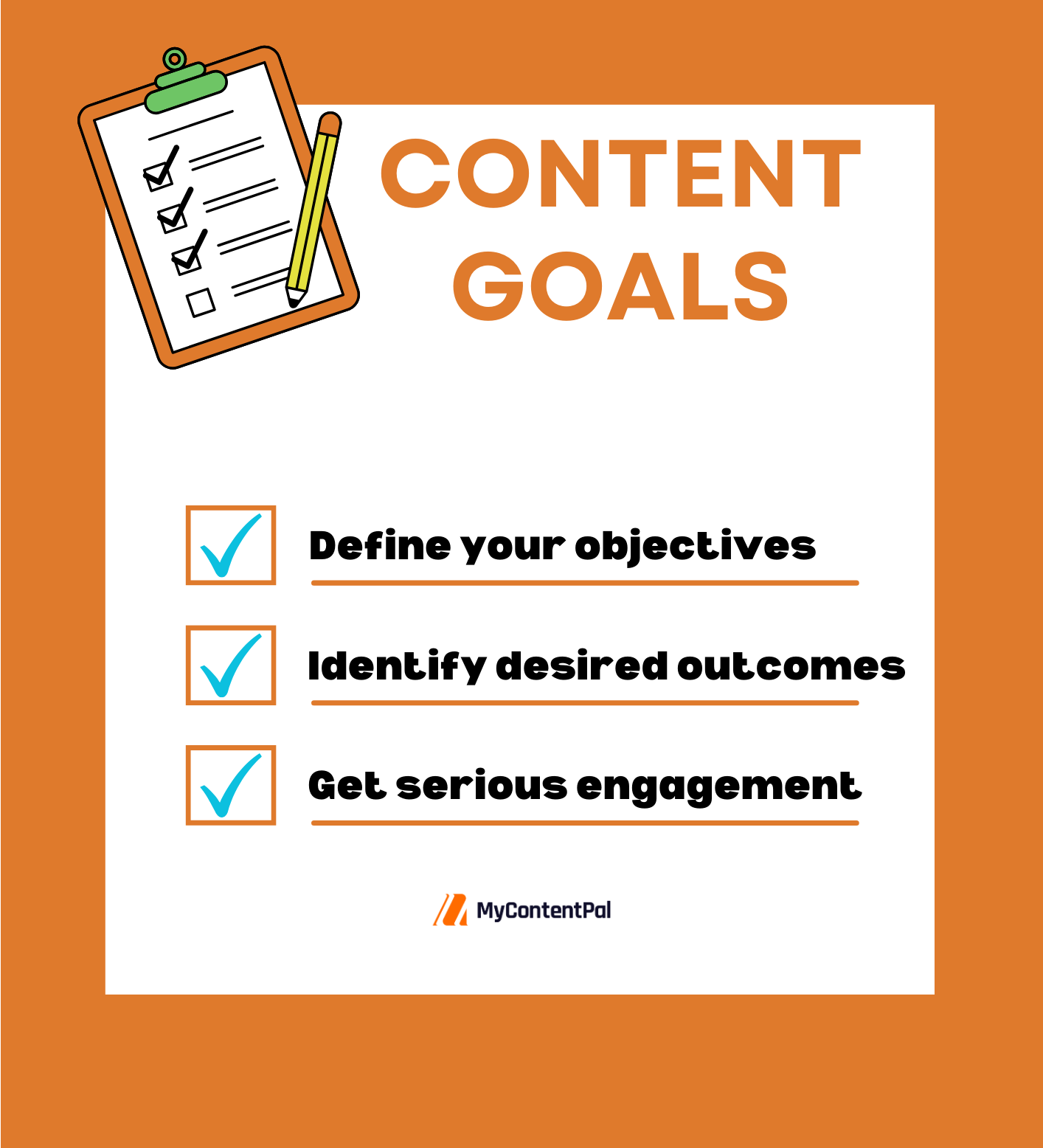
Content goals are essential markers that can help guide your efforts in creating (and sharing) content effectively. Generally, they serve as the foundation for your entire content strategy and keep you focused and aligned with what you want to achieve.
In essence, your goals define what you aim to accomplish through the content you create and distribute. But there are no hard and fast rules on what your goals should be. In fact, they can range from increasing brand awareness and driving website traffic to generating leads or nurturing client relationships.
This is why understanding your goals and defining them properly should be the first thing that you check off your list.
Why content goals are important for your distribution strategy
There are a few reasons why these goals are an integral part of your overall content strategy. They can include:
Defining clear objectives
When it comes to your goals or objectives, it’s important to outline them as clearly as possible. That way, you have a solid foundation to work from to make your marketing strategy stronger than ever.
Remember, your goals can revolve around anything that you want to achieve from your marketing. However, there are usually three main goals that drive a B2B content marketing strategy:
1. Thought leadership: This involves establishing your brand as a credible authority within your industry. You can do this by creating content that showcases both expertise and original insights.
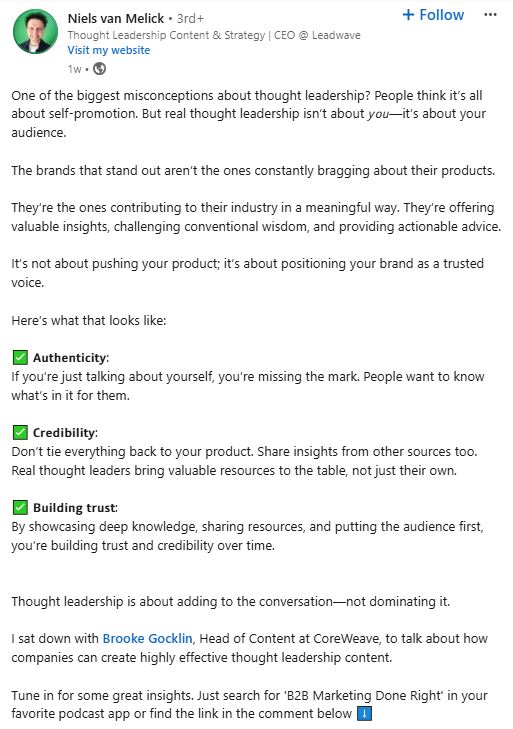
2. Conversions: If this is your goal, it means you’re focusing on converting audience interactions into measurable actions. These actions can include sales, signups, or inquiries, and are done through compelling calls-to-action (CTAs).
3. Brand awareness: Boosting brand awareness means increasing the visibility and recognition of your brand among your target audience. You can usually do this through content that reinforces key brand messages with broad resonance.
Identifying desired outcomes
From your objectives, you can also better understand what you want the outcome of your effort to be. In turn, you’ll be able to measure your success and how well your strategy is doing based on how close you are to reaching these end goals.
Remember, your ideal outcome can be literally anything you want to achieve! But here are some examples to illustrate what this could look like:
Audience Segmentation
Audience segmentation is another crucial step in making sure that you have an effective strategy. By identifying, understanding, and categorising your audience, you can tailor your content to meet their specific needs or preferences.
Why audience segmentation is critical for B2B distribution strategies
Besides being able to customise your content to increase the likelihood of engagement (and conversion), why else should you focus on audience segmentation? Well, there are actually a number of benefits from doing this!
Identify your target audience
Now that you know why it’s important to segment your audience, you can start by identifying exactly who ‘fits the mould’. This means understanding who you want to reach with your content.
You’ll need to consider a few factors, which include:
Create a detailed buyer persona
Here’s where you can use the information you’ve gathered on your ideal audience – to put together a pretty comprehensive buyer persona.
A buyer persona is a semi-fictional representation of the type of customers in your audience and is based on your research and real data.
This process typically involves two simple steps:
- Step A: Use this process to dive deeper into what makes your audience tick. This includes their interests, values, attitudes, and lifestyle choices. That way, you can understand what motivates them, their goals, what they value most in a service or product, and why.
- Step B: Analyse how your audience interacts with your content. You should also spend some time examining their purchase behaviours, loyalty, usage patterns, and any feedback they may offer. Of course, this includes understanding their buyer’s journey and what influences the decision-making process.
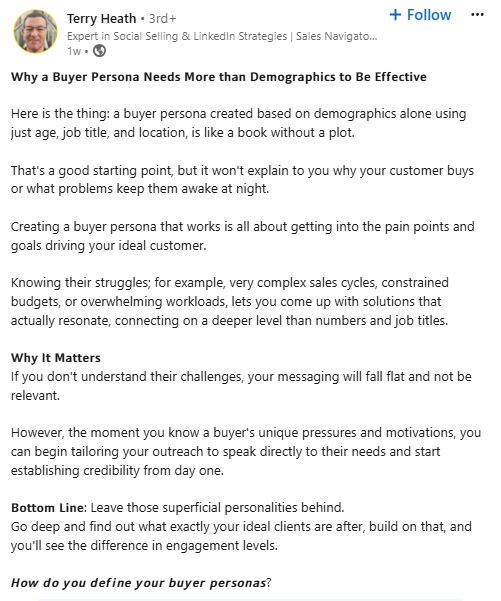
Understand content consumption habits
Knowing how, where, and when your audience consumes content is crucial for effective distribution. For this reason, you’ll want to identify the platforms your audience uses most often. This may be social media platforms, emails, blogs, or industry forums.
For B2B audiences, LinkedIn is super relevant. To understand why, check out our post on LinkedIn marketing statistics, which highlight the platform’s potential for business growth. Meanwhile, B2C audiences may lean towards platforms like Instagram or Facebook.”
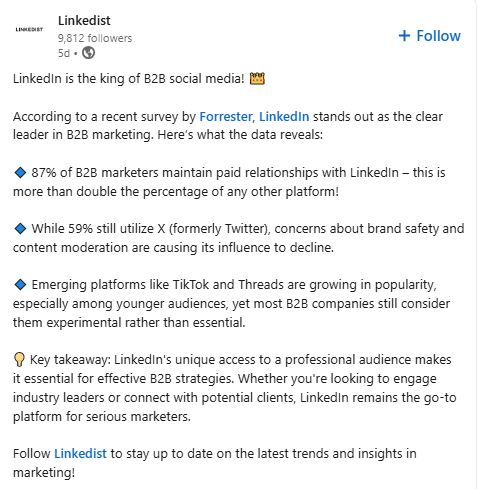
You’ll also need to think about what type of content your audience prefers. Would they rather read a blog post or attend a webinar? Either way, different formats appeal to different preferences and stages within the buyer’s journey.
It should go without saying, but knowing when and how often your audience is active online can make or break how well your content performs. If you’re posting when most of your audience is at work or offline, you’re not going to get the engagement you’re after. Once you have this information in your pocket, you can time your posts for maximum engagement.
Create A Content Plan & Strategy
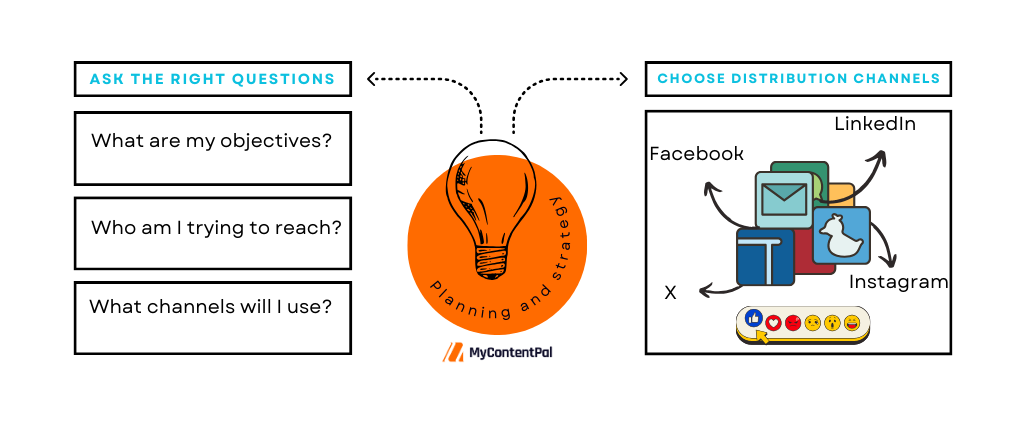
Planning your distribution can ensure that your content reaches the right audience. Plus, it should be moving you closer to the goals that you’ve outlined. Typically, this means coming up with some well-thought-out questions and choosing the right channels to distribute your content.
But before we delve any deeper into that, let’s take a closer look at why this step is important for your overall content distribution strategy.
Why planning and strategy is important for content distribution
A clear strategy is key to ensuring your content marketing efforts are aligned with your business objectives. Not only that, but it’s important for maximising its impact and your ROI. By understanding your audience and choosing the right distribution channels, you can deliver content that drives engagement.
When it comes to strategic planning, this step can help you allocate your resources in the most effective way. In turn, you can get the most out of your content marketing budget. Additionally, a well-defined strategy ensures more consistent messaging across every channel you use. This helps to strengthen your brand identity and trust.
Lastly, having a clear plan and strategy allows you to track the performance of your content. It also enables you to make data-driven decisions for continuous improvement.
In a nutshell: It helps you work on your content distribution strategy and refine it to get the most out of your efforts.
Core questions to guide your content planning
As you’re planning, you’ll need to answer three major questions:
- What are my objectives?
- Who am I trying to reach?
- What channels will I use?
At this stage, you should already have the first two questions answered. So all that’s left is to decide on which distribution channels you should use to reach your audience.
To do this, you need to evaluate certain points, such as:
From there, you can get down to the nitty-gritty of choosing channels that align with your goals. And there is plenty to choose from…
Types of content distribution channels
Owned media
These are channels that your brand controls. They allow you to engage directly with your audience.
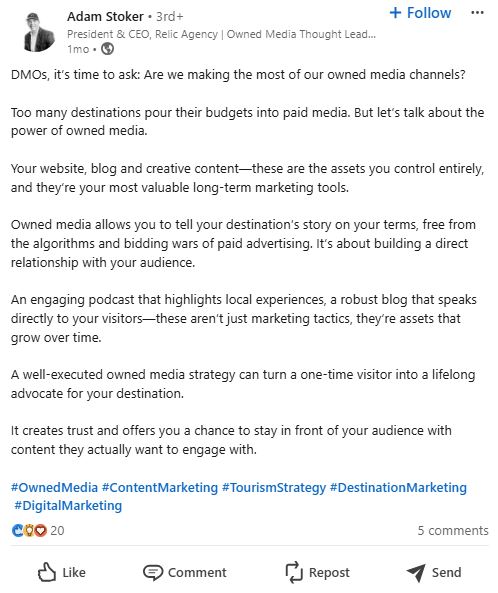
Earned media
Earned media is the exposure your content gets through third-party channels without paying for it. Instead, it’s usually shared because of its quality or relevance.
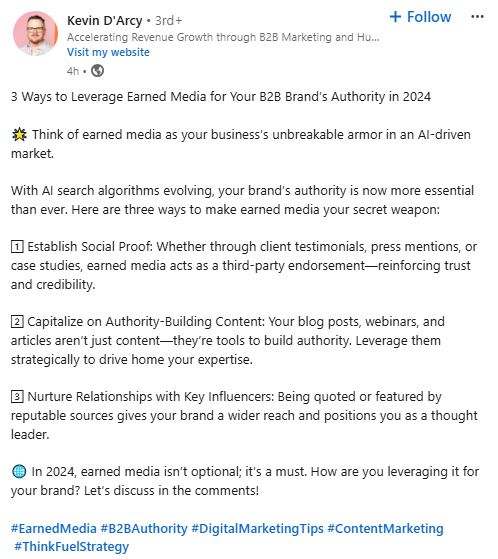
Paid media
As the name suggests, paid media is any media that involves spending money to promote your content and reach a wider audience.
Content Creation

Content creation is a crucial part of any distribution strategy.
So, by including distribution considerations in your creation process, you can ensure your content is optimised for reaching your target audience. This also increases the chances that it will be seen, shared, and engaged with.
To do this, you’ll need to think about how and where the content will be shared right from the brainstorming phase.
Brainstorming with distribution in mind
Start by considering the platforms where your content will be shared – and the preferences of your audience on those platforms. This can help you tailor your content to fit the medium and meet audience expectations.
Here are some questions to get you started:
Create content that encourages distribution
Be sure to craft stories that resonate with your audience on an emotional level and encourage sharing. After all, content that tells a story is more likely to be shared or discussed.
Your content should always include:
Types of content
Different types of content can serve various purposes and be distributed in different ways. But some of the most common types of B2B content you can create are:
Formats for effective distribution
Now that you’re more familiar with the type of content you can create, it’s time to start distributing it! There are several different formats you can use to connect with your audience. Just remember to use the content that is most relevant to them.
Promotion Strategies
Want to give your content a little more oomph? For maximum impact, you need an effective and efficient promotion strategy. All you need to do is:
Prepare your visual assets
Visual assets are crucial for grabbing your audience’s attention and enhancing the appeal of your content. Well-designed images, GIFs, videos, and other visualisations can seriously boost engagement.
Craft effective ad copy
Ad copy is the text that accompanies your visual assets. It’s what persuades your audience to take action, which means that it’s super important for it to follow the three C’s: Be clear, compelling, and concise.
Use outreach best practices
You can’t overlook the importance of outreach when it comes to promoting your content. This involves contacting influencers, bloggers, or media outlets to promote your content. Just remember that well-timed pitches can boost your chances of success!
To do this, you first have to identify the right contacts who are more likely to be interested in your type of content. You should also tailor your pitches to each person.
Don’t forget about social media for promotion
Social media platforms are super powerful tools for content promotion. And each platform has its own strengths and best practices. But the base of any good promotion tactic includes:
- Choose the right platform based on where your audience spends most of their time.
- Engage with your audience through comments, likes, and shares to foster a sense of community.
- Use relevant hashtags and keywords (that you’ve identified through keyword research) to increase your visibility and reach a wider audience.
- Consider using paid ads to target specific demographics and boost the reach of your content.
FAQs
How important is SEO in B2B content distribution?
SEO is pretty important for B2B distribution because it can help boost the chances of your website – and subsequently, your content – being discovered by clients. It can also help to drive quality traffic to your site. This is invaluable when you want to grow your audience.
How can B2B companies measure the ROI of their content distribution efforts?
The best way to measure the ROI of your marketing strategy and efforts is to track your metrics and key performance indicators (KPIs). This includes analysing things like:
- Website traffic
- Engagement metrics
- Lead generation
- Conversion rates
Final Thoughts
Ready to get your content seen, shared, liked, engaged with, and everything in between? Well, now you can. By using this checklist, you can ensure that you have everything covered to make your content distribution strategy stronger than ever.
And, if you want expert insights and to pick the brain of someone who has ‘been there, done that, and learned the lessons’, then why not book a content strategy call with me? Together, we can make your goals a reality.